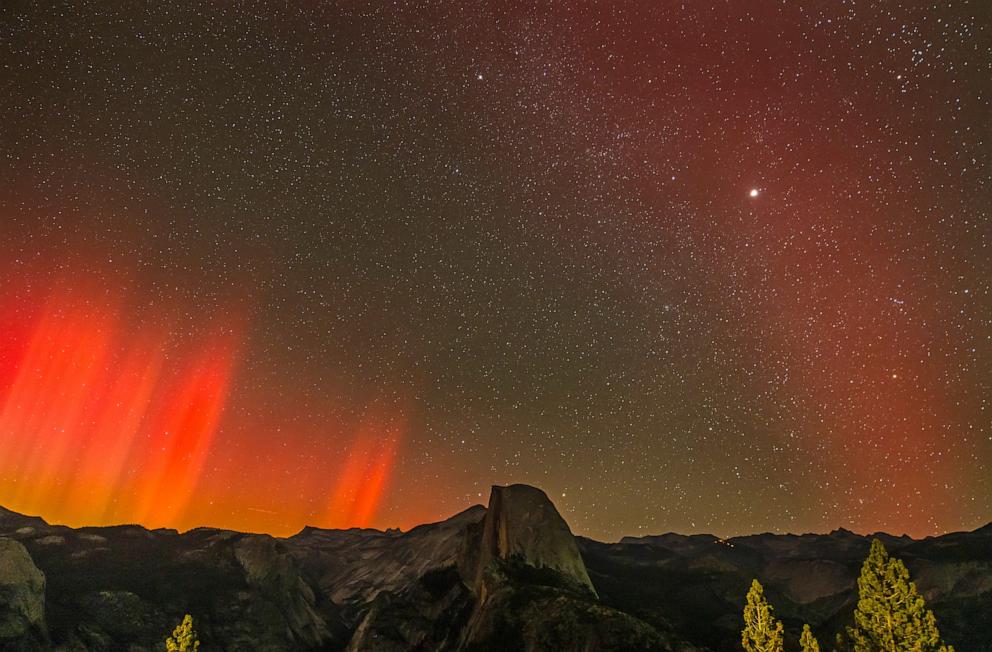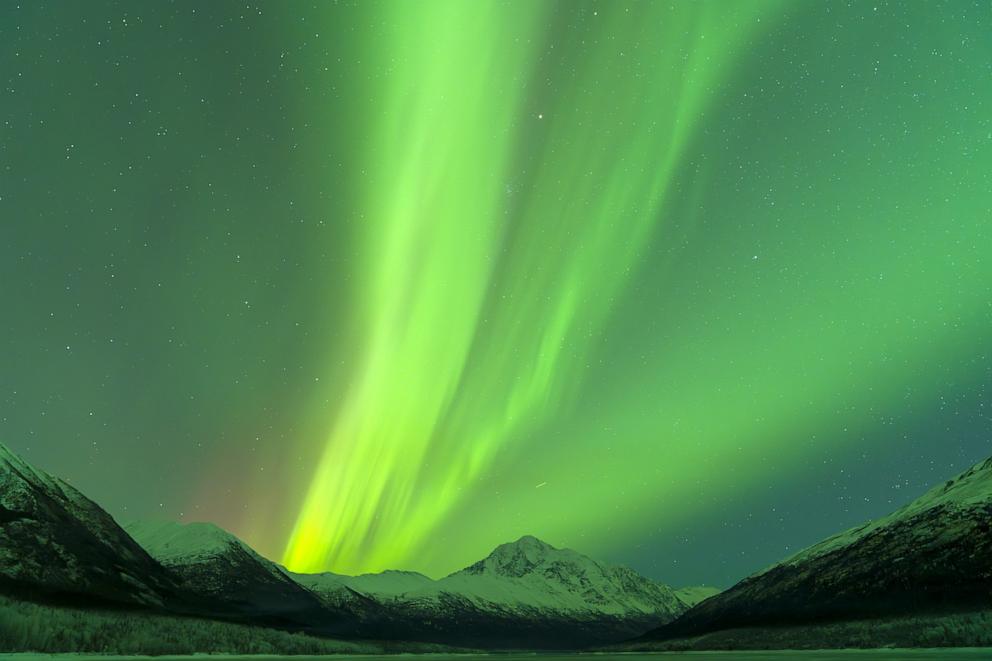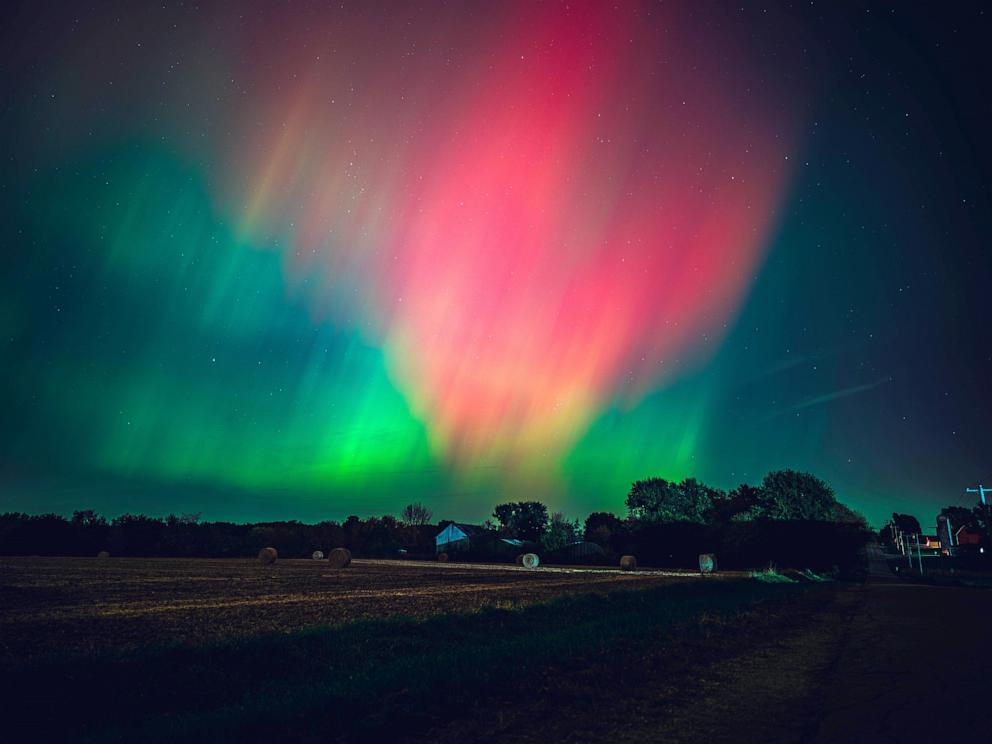Northern lights will be visible in these states this weekend
There could be another display of the northern lights visible in several U.S. states this weekend after a severe solar storm.
The occurrence of geomagnetic storms will be notably significant - rated as a 5 out of a scale of 9 on Friday and Saturday, which implies an increase in auroral activity on those nights is likely.
MORE: Boost Your Odds of Witnessing the Northern Lights as the Current Solar Cycle Reaches Its Peak.
Depending on the power of the coronal mass ejection, states like South Dakota, Wisconsin, and Maine could potentially see the northern lights as well — although the chances are lower.

The sun's magnetic field is now at its peak, resulting in an increase in northern lights activity over the next several months, as more sunspots with high magnetic activity are expected to occur.
Additionally, this is when peak northern lights activity will occurThese sunspots can produce solar flares and coronal mass ejections that create a stunning display when they reach Earth. Northern Lights occur when a burst of solar material and strong magnetic fields from the sun interact with the atoms and molecules in Earth's outer atmosphere, according to NOAA. The interaction causes the atoms in Earth's atmosphere to light up, producing a spectrum of colorful views in the night sky.

It's hard to predict when and where you can see northern lights because of the great distance between the sun and Earth, about 93 million miles, according to NASA.
The platform lets people sign up for notifications when auroras are likely to be visible in their location. Users can also post on the site to confirm if they spotted an aurora, helping the platform quickly let others know when the northern lights are currently visible.
Northeast lights: Bright displays continue to be seen across the eastern United States as a severe solar storm produces spectacular aurora borealis sightsAccording to NOAA, the best times to watch the northern lights are between 10 p.m. and 2 a.m. local time. The perfect viewing conditions for the aurora are when it's completely dark. This means getting away from city lights and even the bright light of a full moon will improve your chances of seeing the northern lights.

Smartphones' cameras are more sensitive to the range of colors seen in the aurora and can capture the northern lights on night mode, even if they aren't visible to the naked eye, as stated by NASA.

Post a Comment